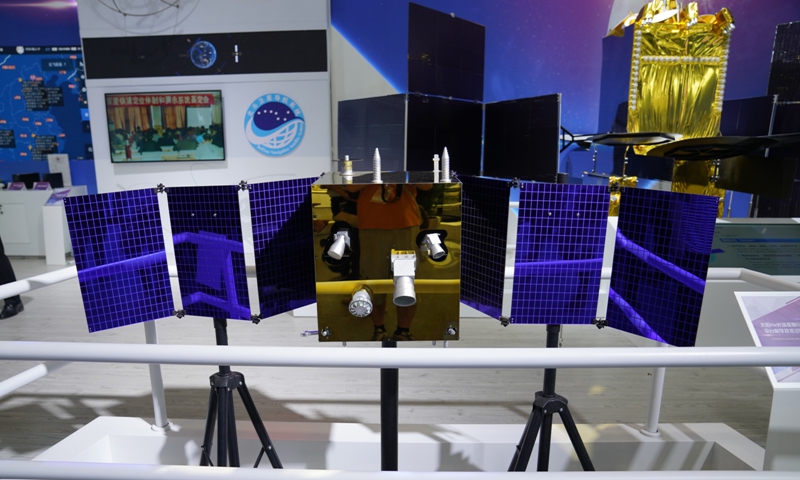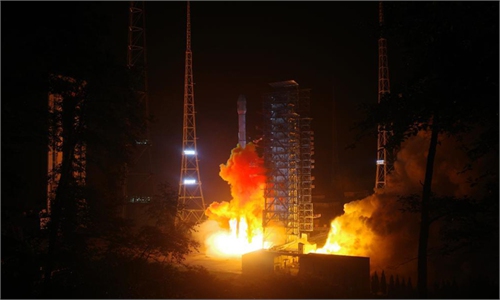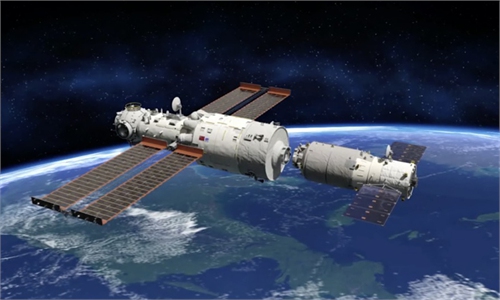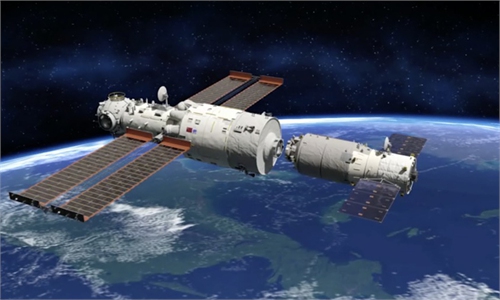
China’s first solar probe will be the first in the world to perform a spectral imaging observation of the H-alpha band of the sun. Photo: Zhou Yang/GT
China's first solar probe, next-generation manned rocket for lunar explorations and a super-heavy-lift launch vehicle will be on the spotlight in the long-awaited Airshow China which will take place from September 28 to October 3 in Zhuhai, South China's Guangdong Province. The event not only displays the country's latest aerospace achievements, but also has a number of surprises that showcase China's most advanced space technologies.
Laying out China's ambition to explore the sun in the near future, the country's first solar probe, developed by the Shanghai Academy of Spaceflight Technology under the China Aerospace Science and Technology Corporation (CASC), will make its first public appearance at the event before its launch shortly afterwards.
One of the key scientific payloads onboard the satellite is the solar H-alpha imaging spectrometer which will be the first in the world to be able to execute spectral imaging observations of the H-alpha band of the sun.
Changes of atmospheric temperature, velocity and other physical factors during the solar eruption can be obtained through the analysis of data of the spectral line, providing key data for the studies on dynamics of the process of solar eruptions.
The birth of this satellite will significantly improve China's international influence in the field of solar physics, observers noted.
Also, set to debut in the event, is the extra-large heavy-lift launch vehicle, which might be named the Long March-9, scheduled to conduct its maiden flight around 2028.
The rocket was developed to be the strongest member of China's launch vehicle family designated to execute manned lunar probe missions, among other deep-space exploration missions, the China Academy of Launch Vehicle Technology (CALT) said.
The rocket, with a diameter of 9.5 meters and with four boosters of 5 meters in diameter each, can launch payloads of up to 140 tons into new Earth orbit, 50 tons into lunar transit orbit and 35 tons into Mars transit orbit.
A next-generation carrier rocket specifically intended for future manned spaceflights to the moon is another highlight of the Chinese rocket family exhibition.
The rocket, 90 meters long and a weight of about 2,000 tons at launch, is capable of sending a payload of 25 tons directly into moon transit orbit or a payload of 70 tons into near-Earth orbit.
It can also combine with multiple modules to accommodate a stream of rocket types that can carry payloads of 40 to 70 tons into low-Earth orbit or 10 to 32 tons into geostationary transfer orbit. It can also be reused on vertical take-off and landing when using multiple engines in parallel layout.
In addition to the launch vehicle, the re-entry module of a new generation manned spacecraft test ship will also be displayed. It survived the extreme heat of up to 3,000 C during re-entry in its successful maiden flight in May last year, which allowed the verification of major technical indicators for future lunar landings with a world-beating level.



